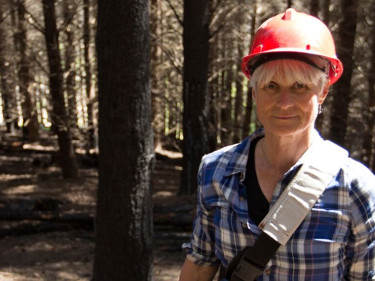There are many benefits to living in the country, however, you will have a higher risk of fire than city dwellers. If a fire does start, you may not detect it right away and emergency services could take longer to reach you due to the greater travel distances that may be involved. Water supplies may also be more limited than in urban areas.
It’s important to understand the fire risks of rural living and take actions to minimise them.
Follow these tips to help protect your rural property from fire:
Smoke alarms
Install smoke alarms and test them every month.
Escape plan
Design an escape plan for you and your family to get out of the house and off the property. Test it regularly.
Access
Make sure your driveway clearance is at least four metres wide and four meters high. Ensure there is adequate turning space for fire trucks and easy access to water.
Landscaping
Keep the grass near your home green and mown. Select plant species that are more fire resistant.
Home maintenance
Fires can start when embers get on your roof and under your house. Clean your gutters and make sure there is nothing flammable beneath the house.
Signs
Make it easy for emergency services to find you by making sure your RAPID rural property identification number is on your signpost and clearly visible from the road.
Fire extinguishers
Install dry powder extinguishers near heat and fuel sources in your home and out buildings.
Sprinklers
Sprinklers are the fastest way to put out a fire. Consider installing a sprinkler system in your home. Modern sprinklers can be easily installed by a plumber and are less expensive than you might think.
Water source
Ensure there is access to an adequate supply of water for fire trucks. Make sure your garden hose is connected and is long enough to reach around the house.
Firewood
Store your firewood and other flammable material away from the house.
Fuel
Safely handle and store liquid fuels and gas.
Machinery
Make sure your machinery and equipment is properly maintained and in good working order. Check there are no birds’ nests in or around your machinery — they are a common cause of machinery fires.
Ash
Dispose of ash in a metal container or wet down with water. Ashes can stay hot enough to start a fire for up to five days.
Create a safety zone

Rural homeowners are at greater risk of fire and must take precautions to protect their lives, homes and property. The 2017 Port Hills fires showed that homes located near trees, scrub or dry grass can be at risk of wildfire during times of extreme fire danger.
One way to do this is to create a safety zone around your home - this is also known as ‘defensible space’. This is the area around your home, where vegetation has been modified, reduced or cleared to create a barrier and slow the spread of fire toward your home. A safety zone also allows space for firefighters to fight the fire safely.
Creating a safety zone involves reducing fuels around your home and using fire-resistant plants for landscaping. Reduce the threat of fires by establishing and maintaining the following three safety zones around your home.
Zone one extends to 10 metres on all sides of your house:
- convert to lawn and plant fire-resistant plants and trees
- remove flammable material and debris
Zone two is from 10 to 30 metres of your home:
- remove scrub and thin excess trees
- evenly space remaining trees so they aren’t touching
- prune large trees and remove all branches within two metres of the ground
- remove dead or dying trees
- remove overhanging branches near power lines














